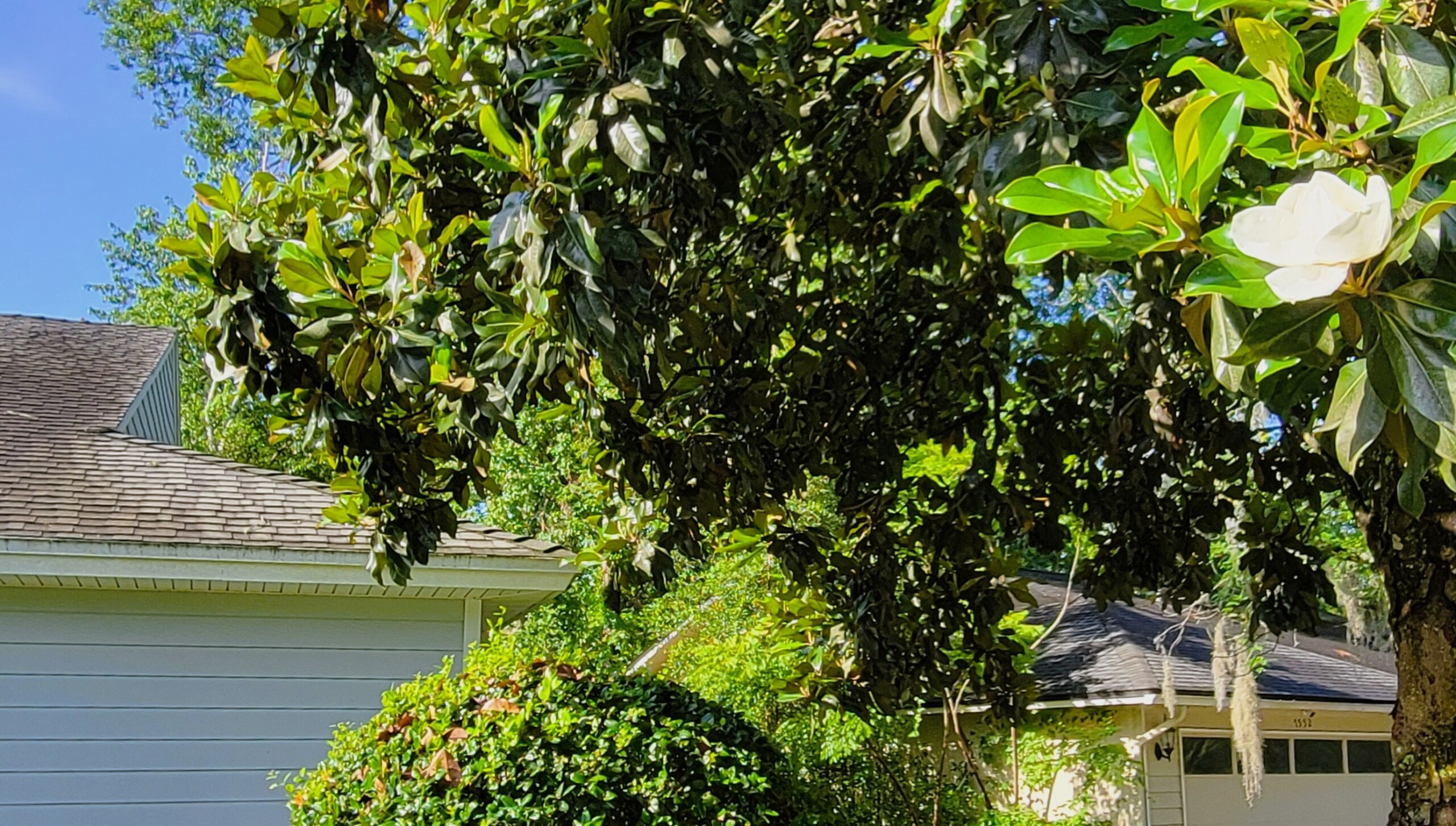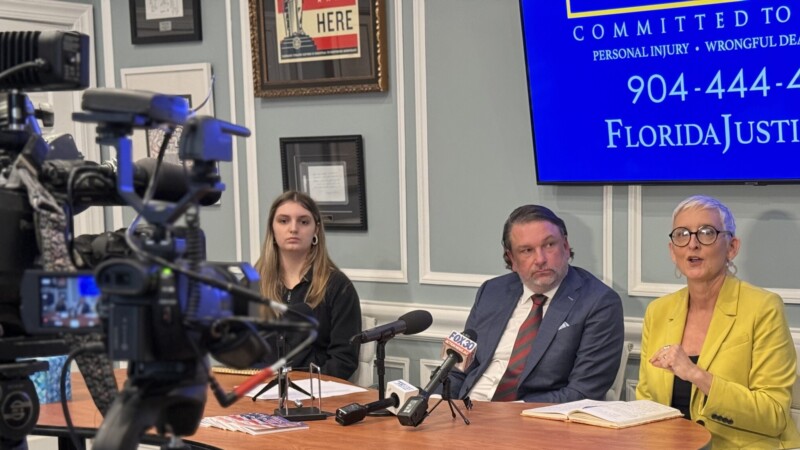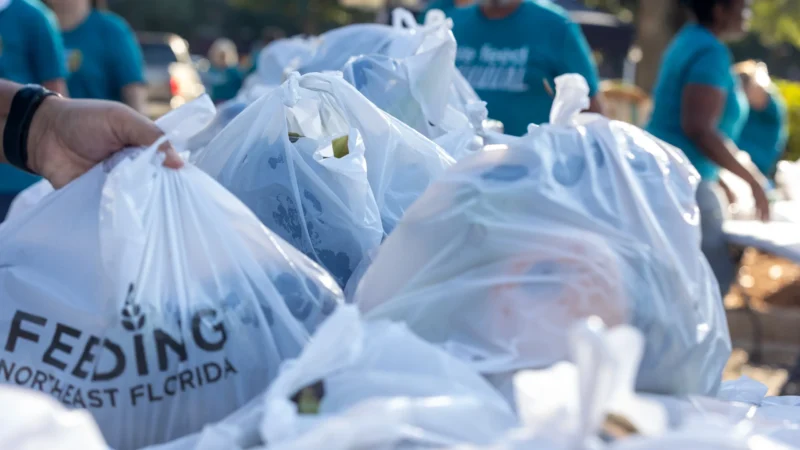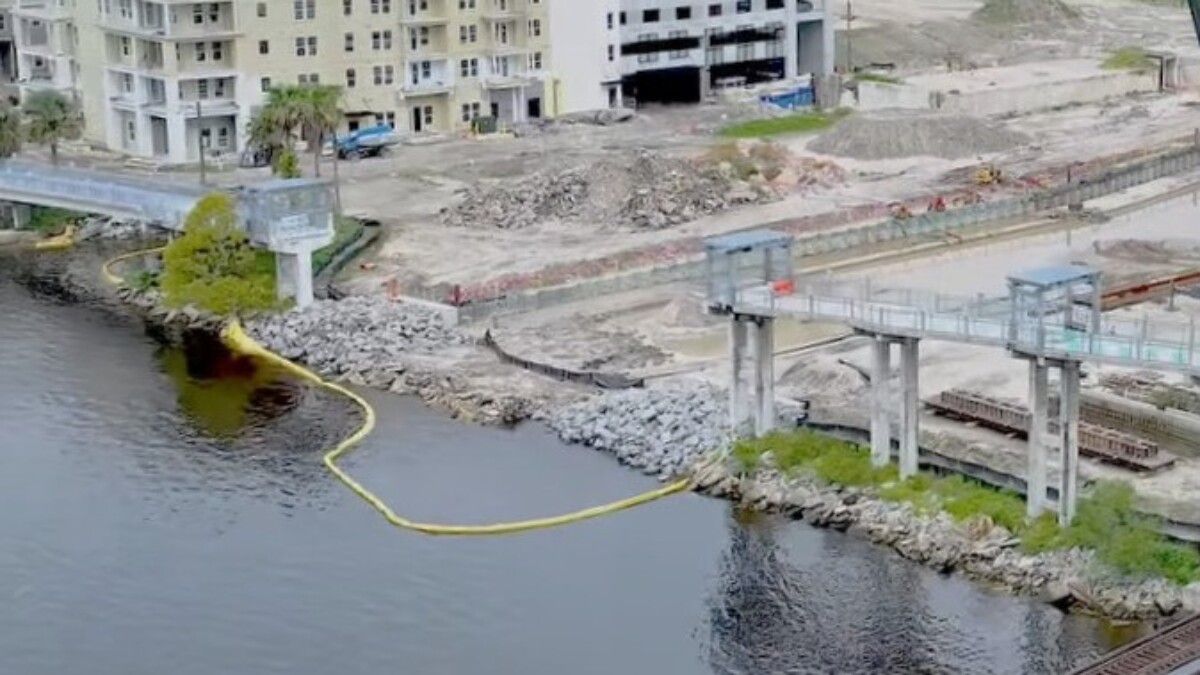Q: Even the most friendly neighbors can have questions about the spaces where their lives overlap. Consider the trees near your property line.
Jacksonville Today reader Anita J. has a question that might be common in Northeast Florida.
“How can I find out if I am responsible for trimming a tree on my property that overhangs the neighbors house?”
A: Jacksonville Today consulted the Handbook of Florida Fence and Property Law from the University of Florida Agricultural Extension Service.
The handbook is based on Florida Jurisprudence, an encylopediac overview of Florida law. The section called “Trees and Landowner Responsibility” outlines which landowner is responsible for dead or live trees that hang over an adjoining property.
The handbook says a landowner is not liable for branches or roots that encroach on an adjoining property. But the adjoining property owner is legally entitled to trim back the roots, branches and other vegetation to the property line, the handbook states.
Going a step further, when a dead tree falls on an adjoining property and damages that home, the landowner where the tree was located is responsible for damages. But when a live tree falls, the owner of the damaged property is responsible.
The handbook spells it out this way: “Consider Landowner A (property owner of tree) and Landowner B (adjoining landowner). If Landowner A’s dead tree falls on Landowner B’s property, Landowner A is responsible for damages. Conversely, if Landowner A’s live/living tree falls on Landowner B’s property, Landowner B is responsible for damages.”
That’s a lot of legalese, and the Extension Service states that Florida Jurisprudence is not binding authority. A court may disregard it when adjudicating a case.
The handbook states that, under a negligence theory, one could argue that a dead tree will fail (especially during a storm), which creates a common law duty of care to remove the dead tree to in order to prevent damage to neighboring property.
“Under this theory, the duty to remove trees may not be limited to dead trees, but may also include live trees with a high risk of failure such as trees with co-dominant leaders and girdling roots,” it says.
There is more there on rules for removing a healthy tree on a boundary line, and the liability for overhanging branches and encroaching roots. For more information, check out the Handbook of Florida Fence and Property Law website.







